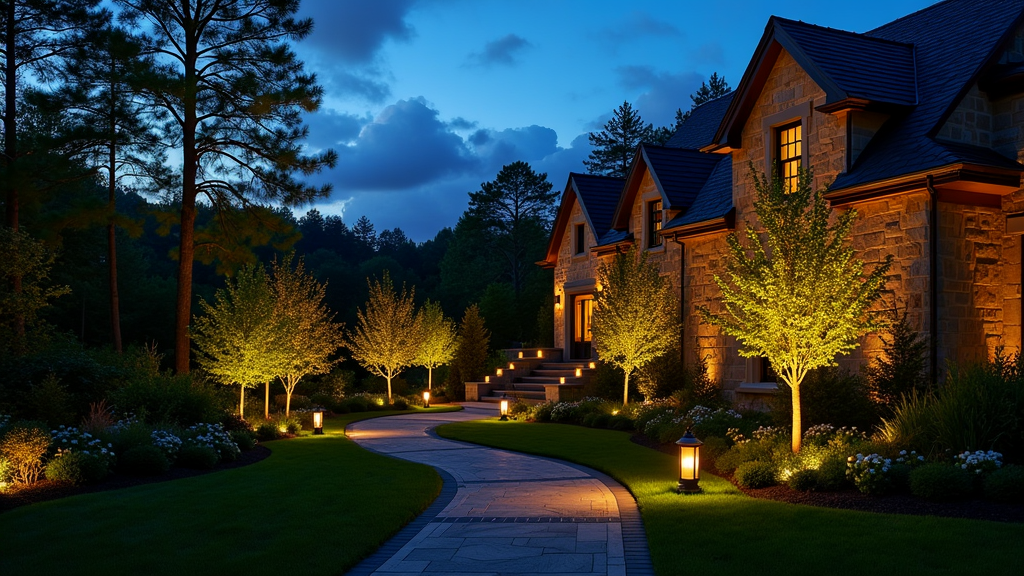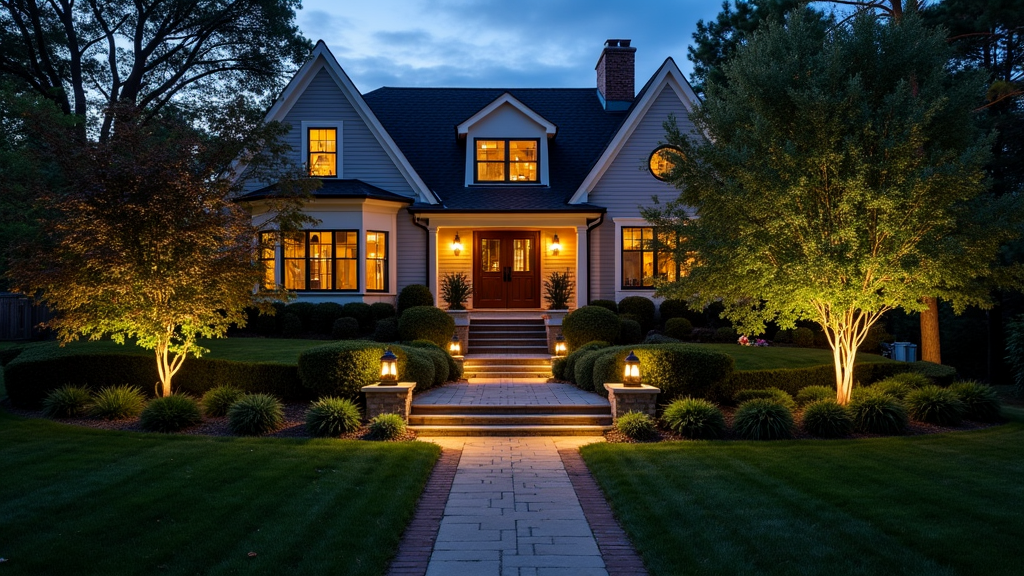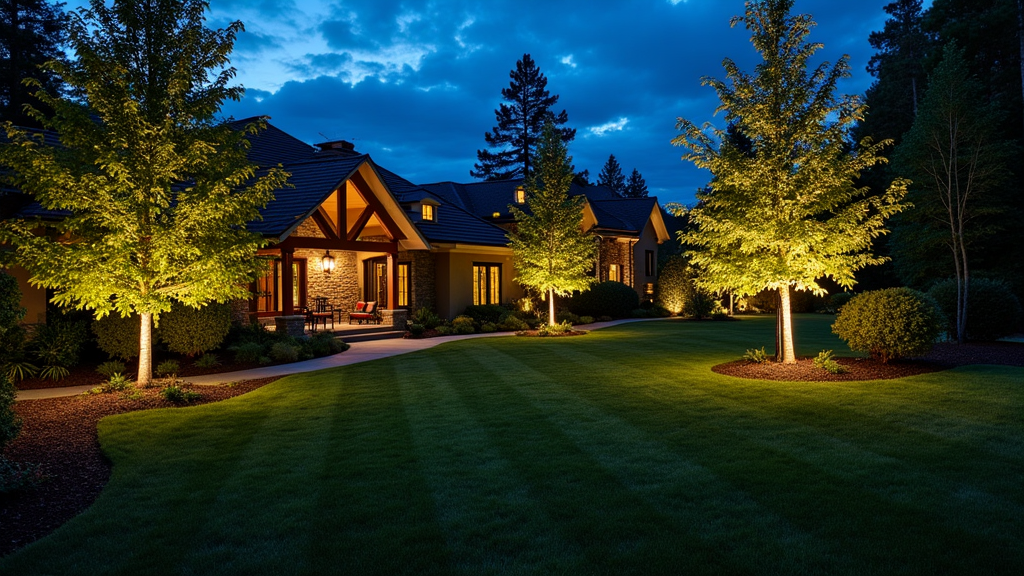Creating captivating outdoor spaces is an art that combines creativity, functionality, and illumination. When it comes to outdoor lighting, one of the most impactful ways to enhance your landscape is by establishing focal points. In this comprehensive guide, we will explore how to create these enchanting features using outdoor illumination.
Understanding Focal Points in Landscape Design
Focal points are essential in landscape design because they draw the eye and create a sense of order within a space. They can be anything from a stunning tree to a beautifully designed patio or even a water feature. The purpose of creating focal points is not only aesthetic but also functional—guiding visitors through your outdoor space.
What Makes a Great Focal Point?
A successful focal point should possess several key characteristics:
Visibility: It should be easily seen from various angles. Proportionality: The scale must complement surrounding elements. Contrast: It should stand out against its backdrop. Interest: It must engage viewers, inviting them to explore further.How Outdoor Lighting Enhances Focal Points
Outdoor lighting plays a critical role in emphasizing these focal points once the sun sets. By illuminating specific areas or features, you can transform your landscape into a magical nighttime oasis.
Types of Outdoor Lighting for Focal Points
Different types of lighting serve various purposes when it comes to creating focal points:
- Spotlights: These direct light onto specific objects, making them stand out. Path Lights: They guide visitors along pathways while subtly highlighting nearby plants or features. Wall Washers: These create soft washes of light on walls or fences, adding depth to the landscape.
Choosing the Right Landscape Lights
When selecting landscape lights for your focal points, consider the following factors:

- Color Temperature: Warm white (2700K - 3000K) creates a cozy ambiance while cooler temperatures can appear more modern. Brightness Level: Ensure that the brightness complements rather than overpowers the setting. Energy Efficiency: Opt for LED lights that use less energy and have longer lifespans.
How to Create Focal Points Using Outdoor Illumination
Creating focal points using outdoor illumination requires careful planning and execution. Here’s how you can achieve this:
Identify Your Natural Focal Points- Look for existing features like trees, sculptures, or architectural elements that can be accentuated.
- Choose fixtures that align with your style and the architecture of your home.
- Map out where each light will go before installation; consider angles and distances for optimal effect.
- Use a combination of ambient, task, and accent lighting to create depth.
- Installing dimmers allows you to control brightness based on mood or occasion.
- Experiment with light angles until you find the most flattering positions for your focal points.
- Regularly check fixtures for functionality and clean them to maintain their effectiveness.
Tips for Effective Outdoor Illumination
1. Utilize Shadows Creatively
Shadows can add drama and intrigue! Position lights so they cast interesting shadows on walls or structures nearby—this adds an artistic touch without overwhelming brightness.
2. Create Layers
Combining different types of lights leads to dimension in your outdoor space; think about layering path lights with spotlights aimed at trees or sculptures nearby!
3. Seasonal Adjustments
As seasons change, so do landscapes! Adjust your lighting setup accordingly—perhaps highlighting blooming flowers in spring while downplaying dormant shrubs in winter months?
4. Consider Light Placement Height
The height at which you install lights greatly influences how they illuminate focal points! Higher placements often create softer effects while lower installations provide sharper contrasts—choose according to desired ambiance!
Incorporating Water Features as Focal Points
Water features such as fountains or ponds make stunning natural focal points when paired with effective outdoor lighting techniques:

1. Illuminate Water Surfaces
Use underwater lights or directional spotlights around water edges to highlight reflections; this creates captivating views after dark!
2. Highlight Cascades
If you have a waterfall feature, position lights above it so they cascade down beautifully illuminated—this adds movement and allure!
Landscaping Around Built Structures as Focal Points
Structures like gazebos or pergolas can also serve as fantastic focal spots; here’s how:
1. Accentuate Architectural Features
Use wall washers along beams/posts for dramatic effects! Highlight unique designs—like arches—to draw attention upward!

2. Incorporate Ambient Lighting Within Structures
String lights within covered structures create inviting atmospheres perfect for gatherings; consider adding lanterns on tables too!
Using Color Filters to Enhance Mood
Experimenting with color filters allows you greater flexibility in mood-setting! For instance:
- Cool colors like blue evoke calmness, Warm hues like orange promote energy,
Make sure filters harmonize with overall theme!
Safety Considerations When Installing Outdoor Lights
While beautifying spaces is paramount—it’s crucial not forget safety:
Ensure all wiring complies with local codes, Use weatherproof fixtures suitable for outdoors, 3 .Position lights away from high-traffic areas where potential tripping hazards exist,
FAQs About Creating Focal Points Using Outdoor Illumination
What types of outdoor illumination are best for landscaping?
The best types include spotlights for highlighting specific features, path lights along walkways, wall washers for creating ambience on surfaces—and LED options offer longevity alongside low energy consumption!
How do I choose colors when installing landscape lights?
Select color temperatures between warm (2700K-3000K) or cool tones based on desired atmosphere; warm tones create cozy feels whereas cooler ones lend modern vibes!
Can I use solar-powered landscape lights effectively?
https://www.ramirezlandl.com/Absolutely! Solar-powered landscape lights are environmentally friendly options requiring no external wiring—but ensure placement receives adequate sunlight during daytime hours!
How do I prevent glare when spotlighting my garden?
To reduce glare from spotlights position them at angles downward instead directly facing upward towards eyes; this helps soften brightness throughout garden spaces while still achieving desired highlights!
What maintenance do outdoor landscape lighting systems require?
Regular checks include cleaning fixtures & checking connections/wires ensuring everything functions properly seasonal adjustments if applicable due changing landscapes over time too!
How long do LED landscape lights typically last?
Generally speaking LED bulbs last up-to 25 times longer than traditional incandescent bulbs averaging around 25k – 50k hours depending quality brand used; making them ideal long-term investments!
Conclusion
In summary, creating captivating focal points using outdoor illumination is both an art and science that involves thoughtful planning and execution—from selecting appropriate fixtures right through to maintaining them regularly thereafter! With proper techniques outlined herein you'll find yourself well-equipped bringing life beauty charm into every inch beyond just daylight hours transforming ordinary yards extraordinary experiences under twinkling stars moonlit nights ahead! So go ahead—embrace creativity unleash potential redefine elegance within own homes outdoors today!